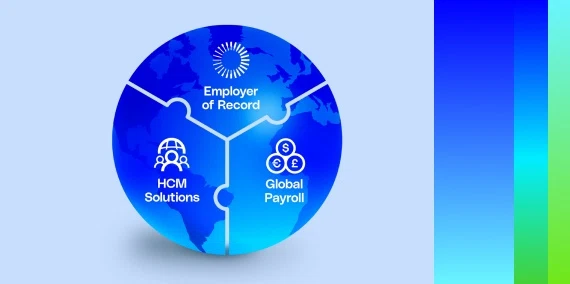Leading a high-performing global team is a task that goes far beyond simply keeping an eye on projects and daily to-dos — just because you’ve grown a global team doesn’t mean it will bear fruit. In fact, setting up the team is just the first step. Managing for success is the next skill to master, and good communication is at the heart of that success. With years of experience as a global Employer of Record (EOR), we know first-hand what it takes to build and manage teams on a global scale — and how to navigate the roadblocks companies encounter along the way.
What are the main challenges of managing a global team?
The struggle of steering global teams isn’t a concern exclusive to just executives. In our recent Global Growth Report, 49% of surveyed workers recognized the need for more operational readiness to support cross-border collaboration. Other workers expressed concerns about their future, enhanced by a lack of visibility with management and unclear growth opportunities.
Despite these obstacles, effective management of a global team is a goal that’s certainly within reach. It requires breaking down language and cultural barriers, juggling different time zones, and building strong relationships with coworkers from diverse cultural backgrounds. With that in mind, let’s delve into a few key communication strategies that can help you successfully manage a global team.

#1 Always consider cultural differences.
Even between workers who share the same language, communication can still get lost in translation. Allyson Stewart-Allen, CEO of International Marketing Partners, and U.S. native living in the UK, noticed stark communication differences between U.S. and UK workers, despite sharing the English language.
While Americans are more upfront about their requirements, Stewart-Allen explains, in the UK, English is more high-context, “which basically means that there’s meaning in what is not said. There’s also multiple layers of meaning in what is said.” As a result, even when speaking the same language, global teams can still fall into miscommunication pitfalls. So, businesses must prioritize cultural awareness and deeply engage with their management teams about the different nuances, formality levels, and decision-making styles in their target markets when going global.
#2 Establish a culture of shared documentation.
Eliminating barriers to information is a crucial part of successfully managing a global team. One pillar of this strategy is a culture of documentation backed by open sharing. Building a knowledge retrieval system rather than exclusively depending on knowledge transfers means that all workers can tap into a trusted data system regardless of time, location, role, or peer availability.
This idea was explained by Darren Murph, VP of Workplace Design and Remote Experience at Andela, who cited that the entire history of humankind has been tracked through written artifacts. How businesses operate should be no different, in his opinion.
#3 Choose technology tools strategically.
Thanks to tools like Zoom, Slack, and Workday (to name a few), global team members in California, Cape Town, or Canberra can communicate instantly with the click of a button. That said, not all tools are equal. When deciding which ones to introduce to your digital ecosystem, leaders need to ensure that the tool they choose will be used strategically.
What challenges can that tool address? And how will it help attain clear communication and responsive management? Likewise, what adverse effects might that tool have on the employee experience? Using too many tools can be ineffective and overwhelming for a global team. Choose wisely.
#4 Foster trust through regular feedback.
A culture of feedback encourages a mindset of continuous improvement. When employees feel that their opinions are valued and their contributions acknowledged, it enhances both engagement and productivity.
And the core seed that can flourish from open dialogue is trust — an essential ingredient for successfully managing a global team. According to MIT, trusted employees show a 260% higher motivation level and are 50% less likely to actively seek alternative employment opportunities. Regardless of position or seniority level, mutual respect stands as the cornerstone of team cohesion — even among colleagues separated by hundreds or thousands of miles.
#5 Instill accountability to empower teams.
Micromanagement, a common pitfall in remote working scenarios, can hinder productivity. A 2022 Microsoft report found that 85% of leaders struggled to trust that their remote teams were being productive. A side-effect of this was that weekly meetings increased by 153% since 2020.
Establishing a culture of accountability is absolutely essential in the domain of remote leadership. Leaders overseeing employees dispersed worldwide must trust and believe in their team’s ability to autonomously execute tasks without undue supervision. To foster trust, G-P has instilled the philosophy of always “assume best intent” when employees collaborate with one another.
Build and manage successful international teams with G-P.
The future of work is global. That’s why, for over a decade, we’ve been helping companies of all sizes unlock the potential of global teams.
Our industry-leading, SaaS-based Global Growth Platform™ makes it easy to plan, hire, and manage global teams — quickly and compliantly — in 180+ countries, regardless of entity status. We equip companies with the essential technology, tools, insights, and expert guidance needed to build and manage successful global teams.
Book a demo to explore the features of our platform today.











